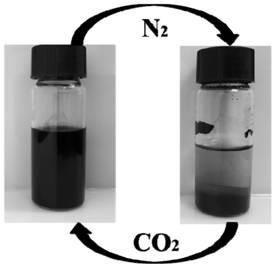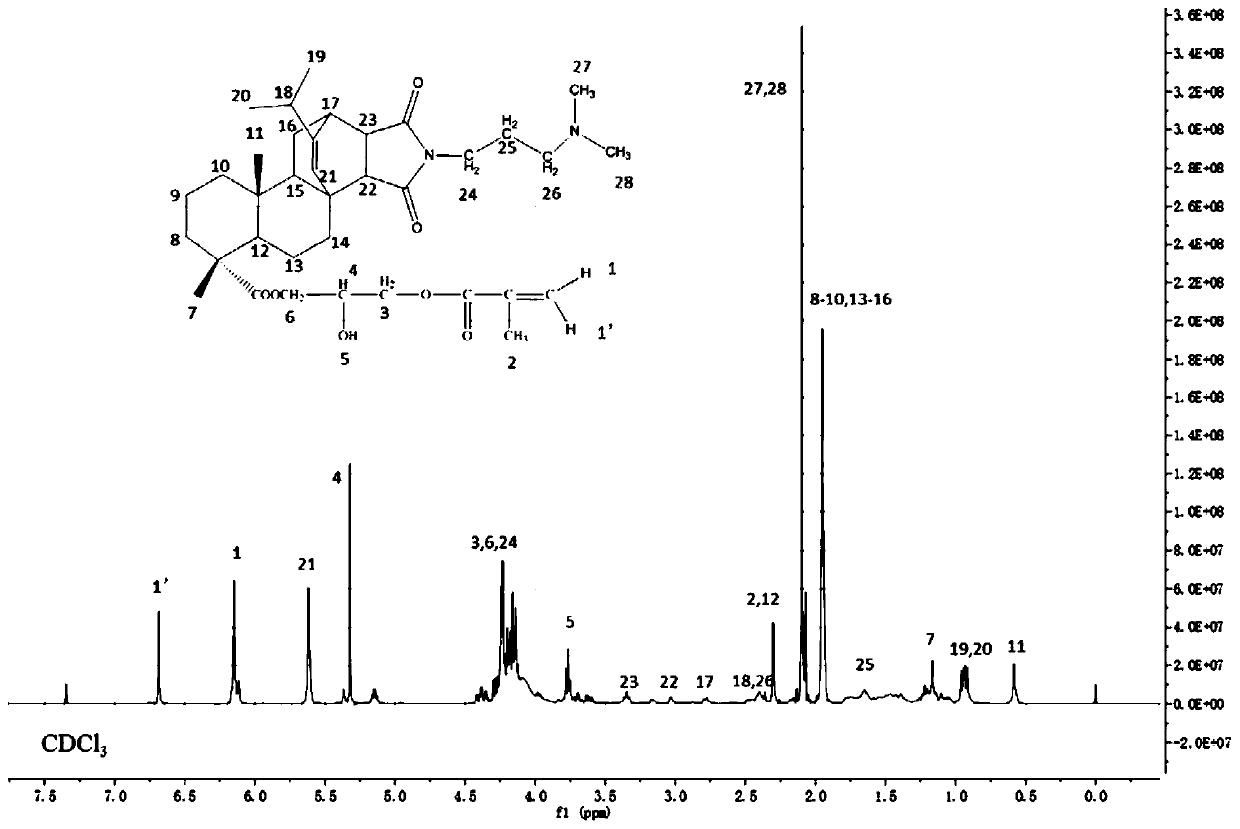Rosin-based CO2/N2 response type polymerizable surfactant, and preparation method and application thereof
A surfactant and rosin-based technology, which is applied in the field of rosin-based CO2/N2 responsive polymerizable surfactants, can solve problems such as research on responsive surfactants
- Summary
- Abstract
- Description
- Claims
- Application Information
AI Technical Summary
Problems solved by technology
Method used
Image
Examples
Embodiment 1
[0029] A rosin-based CO 2 / N 2 Responsive polymerizable surfactant, the structural formula of the product is:
[0030]
Embodiment 2
[0032] Rosin-based CO 2 / N 2 The synthesis of responsive polymerizable surfactants includes the following steps:
[0033] 100g (0.33mol, the total amount of abietic acid, neoabietic acid and palustric acid is calculated as 80%, 0.265mol) masson pine rosin, 35g (0.357mol) maleic anhydride, 40g acetic acid, react at 140°C for 4h, add after cooling 100g of glacial acetic acid was crystallized by cooling, and suction filtered to obtain maleopimaric acid.
[0034] Get 40g maleopimaric acid and 14.2g GMA with temperature jacket, stirring device, in the four-necked flask of reflux device, add appropriate amount of hydroquinone therein as polymerization inhibitor (the amount of hydroquinone accounts for about 0.2~0.5% of the total mass of the reactant), triethylamine is used as a catalyst (the amount of triethylamine accounts for about 0.2~0.5% of the total mass of the reactant), in toluene solvent, reflux reaction for 7h, after the reaction is completed, the solvent is rotary evapo...
Embodiment 3
[0037] Surfactant to CO 2 / N 2 Has a very good response effect (attached figure 2 ), and the reversible conversion of MPAGN solution to CO can be judged by the conductivity and pH 2 / N 2 responsiveness. CO 2 Soluble in aqueous solution to form H 2 CO 3 A weak acid solution (pH = 5.2), resulting in the protonation of the tertiary amine group, generating a charged cationic surfactant that increases the conductivity to about 340 μS / cm. When passing N at 60°C 2 drive out CO 2 Afterwards, the weak acidity of the solution disappears (pH=7.4), and the charged cationic surfactant deprotonates back to the original tertiary amine group state, reducing the conductivity to about 177 μS / cm. When CO is introduced again 2 Afterwards, the conductivity rises again to about 340μS / cm (pH=5.2), and this process can be repeated several times to show that MPAGN has a strong effect on CO 2 / N 2 is very responsive (attached image 3 ).
PUM
 Login to View More
Login to View More Abstract
Description
Claims
Application Information
 Login to View More
Login to View More - R&D
- Intellectual Property
- Life Sciences
- Materials
- Tech Scout
- Unparalleled Data Quality
- Higher Quality Content
- 60% Fewer Hallucinations
Browse by: Latest US Patents, China's latest patents, Technical Efficacy Thesaurus, Application Domain, Technology Topic, Popular Technical Reports.
© 2025 PatSnap. All rights reserved.Legal|Privacy policy|Modern Slavery Act Transparency Statement|Sitemap|About US| Contact US: help@patsnap.com



